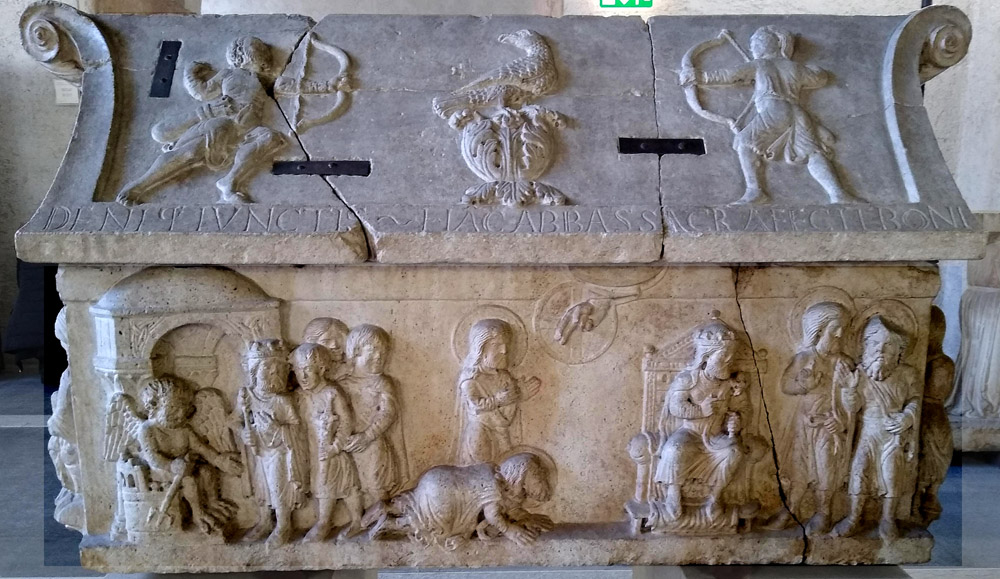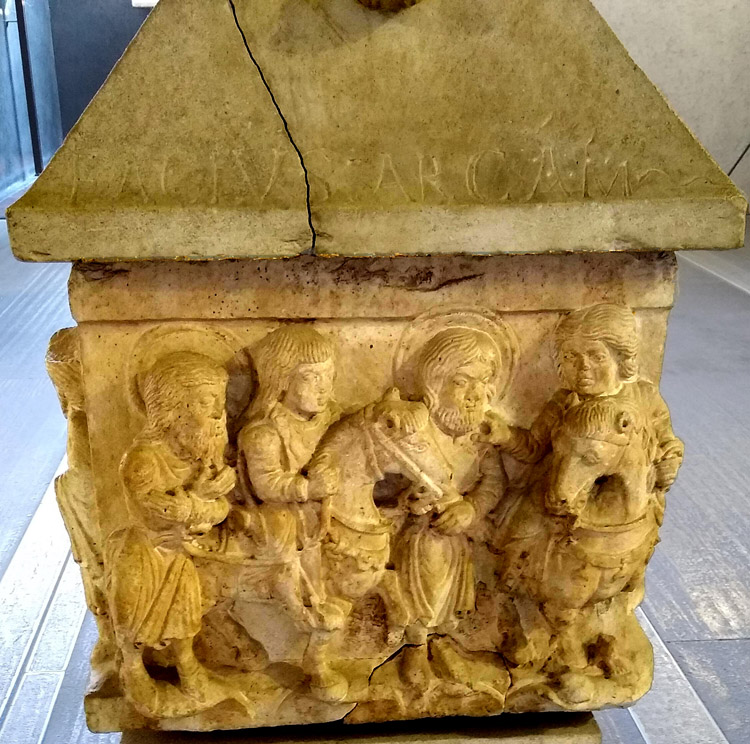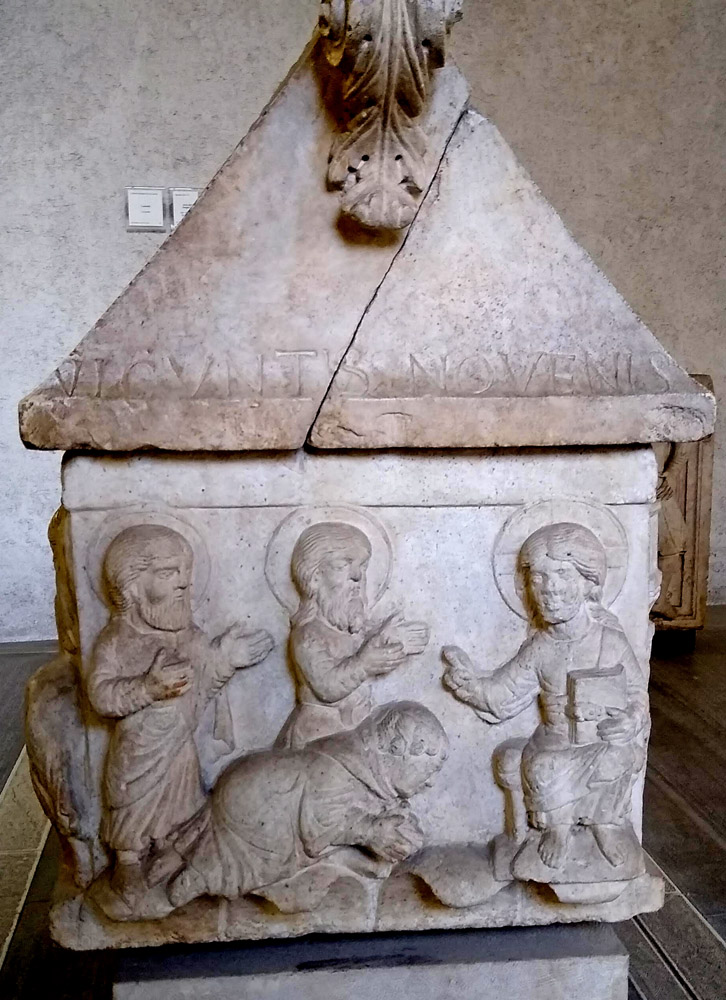 On the front of the sarcophagus the emperor Maximian and the envious courtiers are at left with an idol of Jupiter in his temple. The emperor is identified by his crown and scepter. The group looks disdainfully toward the scene in the center, where Sergius and Bacchus are adoring the true God, who is represented by a hand reaching from the sky. The saints had been asked to go with Maximian to the temple, but they refused.
On the front of the sarcophagus the emperor Maximian and the envious courtiers are at left with an idol of Jupiter in his temple. The emperor is identified by his crown and scepter. The group looks disdainfully toward the scene in the center, where Sergius and Bacchus are adoring the true God, who is represented by a hand reaching from the sky. The saints had been asked to go with Maximian to the temple, but they refused.
On the right, the emperor on his throne warns the two to desist from their irregular worship. His pointing finger registers the warning. The palm-out gesture they make must be intended as a sign of their refusal, although it is the same one that Mary makes in Annunciations of this period. (See this section of the Annunciation page.) If the gesture is taken to have a single meaning, it may be a way of registering a troubled or confused mind: Luke's gospel says Mary was turbata, "troubled" at the angel's salutation.
After St. Bacchus was killed the governor ordered his body to be exposed to the carrion beasts, but in one version of the legend those beasts were kept at bay by a flock of birds that protected the body until certain Christians could take it away for a proper interment. This may explain the grand bird pictured on a stylized nest in the center of the lid. The archers aiming at the bird, however, have no relation to the story of these two saints.
 Next, on the right side, two knights on horseback conduct Sergius and Bacchus to Antioch, where they are to be judged by the governor.
Next, on the right side, two knights on horseback conduct Sergius and Bacchus to Antioch, where they are to be judged by the governor.
 On the back of the sarcophagus, the governor of Antioch gives the saints one last chance to abandon their faith (on the left). Having refused, they are executed (on the right). On the left of the execution scene Bacchus is beaten to death with a club; on the right, Sergius is beheaded.
On the back of the sarcophagus, the governor of Antioch gives the saints one last chance to abandon their faith (on the left). Having refused, they are executed (on the right). On the left of the execution scene Bacchus is beaten to death with a club; on the right, Sergius is beheaded.
On the lid, the two saints are pictured as knights. At the top of the lid the inscription says, ✝ sergius et bachvs requies, "Sergius and Bacchus the rest in," followed by a meaningless group of four letters and a siglum and then the abbreviation sanctus, "holy."
 Finally, on the left side, they are in Heaven interceding with Christ on behalf of Boniface, the abbot who commissioned the sarcophagus.
Finally, on the left side, they are in Heaven interceding with Christ on behalf of Boniface, the abbot who commissioned the sarcophagus.
The inscription along the lip of the lid is somewhat puzzling: ✝ ANNIS MILLENIS CENTENIS SEPTVAGEN[T]IS HIS DI[?] VICVNTIS NOVENIS DENIQUE IVNCTIS ⁓ HĀC ABBAS SACRA[M] FECIT BONIFACIVS ARCAM ⁓ The words before DENIQUE give the year as 1179, but also include the words DI[?] VICVNTIS. I cannot interpret the latter, nor can I explain why the year would be given in the dative plural case. DENIQUE IVNCTIS, also in the dative plural, means "together at last" and must refer to the two martyrs. The rest of the inscription means "Abbot Boniface made this sacred chest."
View these images in full resolution.
Read more about Saints Sergius and Bacchus